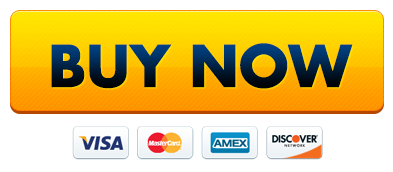Price: $39.95 - $32.62
(as of Jan 12, 2025 04:06:49 UTC – Details)
The Principles of Beautiful Web Design is the ideal book for anyone who wants to design stunning websites that provide a great user experience. Perhaps you’re a developer who wants to understand how to make your applications more visually appealing, or you’re a novice who wants to start on the path to becoming a designer.
This book will teach you how to:
Understand what makes “good design,” from discovery through to implementationUse color effectively, develop color schemes, and create a paletteCreate pleasing layouts using grids, the rule of thirds, and symmetryEmploy textures: lines, points, shapes, volumes, and depthApply typography to make ordinary designs look greatChoose, edit, and position effective imagery
This easy-to-follow guide is illustrated with beautiful, full-color examples, and will lead you through the process of creating great designs from start to finish.
The fourth edition of this bestselling book has been greatly revised and now features:
Updated and expanded coverage responsive web design techniquesA new sample projectNew sections on pattern libraries and how design fits on modern app development workflowsCommon user-interface patterns and resources
From the Publisher


Good design isn’t magic
The Principles of Beautiful Web Design takes the guesswork out of design, and gives you simple, reliable, techniques for making great design decisions every time.
Lavishly illustrated with detailed examples, The Principles of Beautiful Web Design is an easy-to-follow guide that will lead you through the process of creating great designs from start to finish. No prior web design experience is required.
This book comprises the following five chapters. You can read them from beginning to end to gain a complete understanding of the subject, or skip around if you only need a refresher on a particular topic. If you’re squeamish about choosing colors, feel uninspired by a blank browser window, or get lost trying to choose the right font, this book is for you.
We take a methodical approach to presenting traditional graphic design theory as it applies to today’s website development industry. While the content is directed towards web programmers and developers, it provides a design primer and relevant examples that will benefit readers at any level.
Learn 100% reliable, repeatable techniques for creating designs that look fantastic AND are a joy to use. Learn the trick to building a robust, extendable typography system Pull together a successful color palette Find and create eye-catching imagery Design flexible, bullet-proof layouts and much more…


Chapter 1: Layout and Composition
An awareness of design relies heavily on understanding the spatial relationships that exist between the individual components of a design. The layout chapter kicks off the design process by investigating possible page components. With these blocks defined, we discuss some tools and examples that will help you start your own designs on a solid foundation.
To wrap up this discussion, we’ll examine a real client project that we’ll be following as an example through each chapter: the design of Trashmonger, a website for a photographer and digital artist who is looking to create a simple, attractive gallery site to display and market her work.


Chapter 2: Color
Perhaps the most mysterious aspect of design is the topic of color selection. Chapter 2 sheds light on this as we delve into both the aesthetic and scientific aspects of color theory. Armed with these simple guidelines, and some tips for creating harmonious color combinations, you’ll see how anyone can choose a set of colors that work well together to complement the overall message of a website. Finally, we’ll learn how the palette for Trashmonger was chosen.


Chapter 3: Texture
An aspect of web design that’s often overlooked, texture is the key to creating designs that stand out. By understanding how the individual elements of texture function, you’ll learn how to use points, lines, and shapes to communicate and support your site’s message on a number of levels. We’ll then get to see firsthand how the addition of a simple texture motif to the Trashmonger project adds subtle visual distinction to our design.


Chapter 4: Typography
The importance of typography is undeniable. Type is everywhere, and understanding the mechanics of written language is essential for any visual designer. In this chapter, we’ll dive beneath the surface of this rich topic, exploring the basics of the letterform, and investigating various typeface distinctions. We’ll also learn how to establish a typographic system, which minimizes the number of hours spent adjusting the myriad variables that can apply to type such as sizing, line heights, margins and weights. Finally, we’ll look at the process of building a type system for the Trashmonger project.


Chapter 5: Imagery
The necessary companions to any well-designed site are the images and illustrations that grace its pages. In the final chapter, we’ll discuss what we should look for in the visual elements that we use on our pages, and locate sources of legitimate supporting imagery. Of course, finding the right image is often just the beginning. We’ll also learn some image-editing basics before we see the final steps in our example project.
Publisher : SitePoint; 4th edition (October 13, 2020)
Language : English
Paperback : 282 pages
ISBN-10 : 1925836363
ISBN-13 : 978-1925836363
Reading age : 1 year and up
Item Weight : 1.3 pounds
Dimensions : 8 x 0.59 x 10 inches



